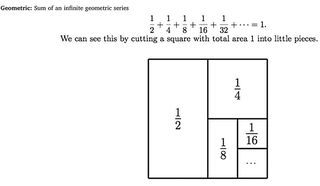For some people, math can be a necessary headache. Yes, algorithms guide countless aspects of daily life. There are tips to calculate and hours to count. But unless someone's a specialist, they'll probably ignore complex math in any given situation if they can help it.
But Yale assistant professor of mathematics Stefan Steinerberger wants to challenge that perception. His new study shows that an average American can assess mathematical arguments for beauty just as they can pieces of art or music.
And he has the numbers to prove it.
Beauty is in the eye of the beholder, of course. But for Steinerberger and coauthor Samuel G.B Johnson, beauty is made up of nine separate components: seriousness, universality, profundity, novelty, clarity, simplicity, elegance, intricacy, and sophistication. They didn't come up with those criteria themselves, but expanded on ideas laid out in “A Mathematician’s Apology,” a 1940 essay by mathematician G.H. Hardy.
"The mathematician’s patterns, like the painter’s or the poet’s must be beautiful; the ideas like the colours or the words, must fit together in a harmonious way. Beauty is the first test: there is no permanent place in the world for ugly mathematics," Hardy wrote in his essay, which meant to draw distinctions between applied mathematics, as seen today in computer science and statistics, and what he called "pure," or theoretical, mathematics.
Steinerberger's interest in the concept of mathematical beauty came when he compared a proof he was teaching to a “really good Schubert sonata.”
“As it turns out, the Yale students who do math also do a statistically impressive amount of music,” Steinerberger said in a press release. “Three or four students came up to me afterwards and asked, ‘What did you mean by this?’ And I realized I had no idea what I meant, but it just sounded sort of right. So, I emailed the psych department.”
The hunt of understanding beauty eventually led him to Johnson, now an assistant professor of marketing at the University of Bath School of Management, whose specialities are quite different than Steinerberger's. “A lot of my work is about how people evaluate different explanations and arguments for things,” he said.
The two realized they were a good match, and decided to analyze aesthetic sensibilities within math as happens with other forms like art or music.
“I had some diffuse notion about this, but Sam immediately got it,” said Steinerberger. “It was a match made in heaven.”












